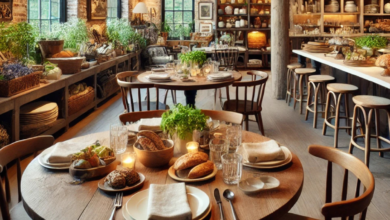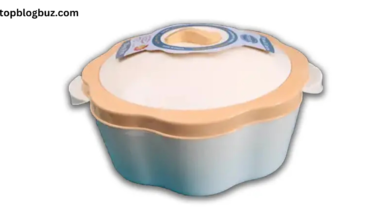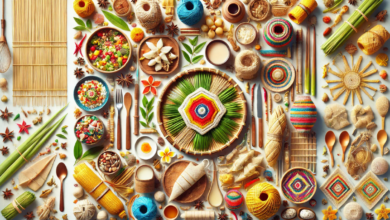How to Perfectly Cook Over Medium Eggs: A Comprehensive Guide

Introduction
What Are Over Medium Eggs?
Over Medium Eggs are a classic breakfast staple, beloved for their perfectly balanced texture. These eggs are cooked to achieve firm whites while keeping the yolks slightly runny but not as liquid as their Over Medium Eggs counterparts. The yolks are creamy and jammy, offering a delightful bite that’s neither too loose nor too firm. Over-medium eggs strike the perfect Over Medium Eggs ground between sunny-side-up and over-hard eggs, making them a versatile addition to any meal.
While sunny-side-up eggs remain untouched on one side and over-easy eggs are flipped for a lightly runny yolk, over-medium eggs take it one step further. They’re flipped and cooked just long enough to achieve a custardy yet stable consistency, ideal for those who want the best of both worlds.
Why Mastering Over Medium Eggs Matters
Perfecting over medium eggs may seem simple, but it’s an essential skill for home cooks and food enthusiasts. These eggs are versatile, pairing effortlessly with toast, salads, and gourmet burgers. Additionally, they’re a crowd-pleaser, offering a texture that appeals to people who find entirely runny or solid yolks unappetizing. Mastering this technique ensures you have a go-to option for satisfying breakfasts or elevated brunches.
Cooking over medium eggs is also an exercise in patience and precision, helping you refine your culinary skills. The reward? A plate of perfectly cooked eggs that highlight your attention to detail and care in the kitchen.
The Science Behind Over Medium Eggs
Understanding Egg Anatomy
Eggs may seem simple, but they’re complex structures that behave differently under heat. The egg white, or albumen, is made of water and proteins that coagulate when heat exposure, creating the firm texture we associate with cooked eggs. Meanwhile, the yolk, rich in fats and nutrients, requires less heat to achieve a creamy, semi-solid consistency.
This delicate balance means timing is everything. Too much heat or too long on the stove, you’ll end up with overcooked eggs. Too little, and you risk runny whites or overly liquid yolks. Achieving over medium eggs requires precise control over these two components, ensuring both are cooked right.
Key Equipment and Ingredients
The right tools and ingredients are essential for success. A non-stick skillet is your best friend when cooking over medium eggs, as it minimizes sticking and ensures an even cook. Cast iron pans can also work if correctly seasoned. Use a flexible spatula to flip the eggs without breaking the yolk.
Fresh eggs are crucial for achieving the ideal texture. Fresher eggs have firmer whites that spread less in the pan, making them easier to manage. Regarding fat, both butter and neutral oils work well, though butter adds a rich flavour that complements the eggs beautifully.
Step-by-Step Guide to Cooking Over Medium Eggs
Preparation
Start by gathering your tools and ingredients: a non-stick pan, a spatula, eggs, and your choice of cooking fat. Preheat the pan over medium-low heat, allowing it to reach an even temperature. Add a small amount of butter or oil, swirling it around to coat the surface. A properly preheated pan ensures the eggs cook evenly without sticking.
Cooking Technique
Crack the eggs gently into the pan to keep the yolks intact. If you’re new, crack the eggs into a small bowl first, then slide them into the pan. Cook on medium-low heat until the whites are set, but the yolks remain jiggly. This usually takes about 2 to 3 minutes.
The key here is patience. Resist the urge to increase the heat, which can cause the whites to cook too quickly and become rubbery.
The Flip
Flipping is the most critical step in achieving over medium eggs. Using your spatula, carefully slide it under the egg and flip it over with a quick but gentle motion. Let the eggs cook for 30 seconds to 1 minute, depending on your desired yolk consistency. The goal is to cook the yolks just enough to thicken them slightly while keeping them soft.
Final Touches
Once the eggs are cooked, remove them from the pan and season with salt and pepper. For extra flavour, add a pinch of paprika or herbs like chives. Serve immediately for the best texture and taste.
Variations and Pairings
Creative Takes on Over Medium Eggs
Why stick to plain eggs when you can get creative? Enhance the flavour by adding shredded cheese, fresh herbs, or a sprinkle of chilli flakes before flipping. For a gourmet twist, drizzle truffle oil or top with a dollop of pesto.
Over medium, eggs can also be incorporated into various dishes. Place them atop avocado toast for a hearty breakfast, or add them to a grain bowl for a protein-packed lunch. They’re also excellent on burgers, where the yolk adds richness to every bite.
Perfect Pairings
Over medium, eggs shine when paired with complementary sides. Classic options include crispy bacon, buttery toast, and golden hash browns. For a healthier spin, serve them with a fresh arugula salad or roasted vegetables. Beverages like freshly brewed coffee or a tangy mimosa complete the meal, making it perfect for brunch.
Common Mistakes and How to Avoid Them

Overcooking or Undercooking
One of the most common pitfalls is overcooking the yolks or leaving the whites underdone. To avoid this, keep a close eye on the cooking time and use medium-low heat. If in doubt, err on the side of undercooking, as the residual heat will continue to firm up the eggs after they’re removed from the pan.
Pan and Temperature Issues
If your eggs stick to the pan, it’s likely due to insufficient oil or improper preheating. Preheat your pan and add enough fat to create a smooth cooking surface.
Yolk Troubles
Breaking the yolk during flipping can be frustrating. To practice, try flipping a slice of bread in the pan before attempting eggs. With enough practice, your flipping skills will become second nature.
General Troubleshooting Tips
- Always use fresh eggs for better structure.
- Avoid overcrowding the pan to give each egg enough space to cook evenly.
- Use a lid if you want to speed up the cooking process for the whites before flipping.
Conclusion
Cooking over medium eggs is an art that rewards patience and precision. By mastering the techniques outlined above, you’ll consistently achieve perfectly cooked eggs with firm whites and creamy yolks. Whether enjoyed alone or as part of a larger dish, over-medium eggs are a versatile and delicious addition to any meal. Take the time to practice and experiment with flavours, and you’ll soon have this skill perfected.
FAQs
- What’s the difference between over-medium and over-easy eggs?
- Over-easy eggs have a runnier yolk, while medium eggs have a slightly firmer, jammy yolk.
- How do I know when to flip the eggs?
- Flip the eggs when the whites are fully set but the yolks are still jiggly.
- Can I cook over medium eggs without flipping them?
- Yes, cover the pan with a lid to steam the tops of the eggs, achieving a similar result.
- Why do my eggs stick to the pan?
- This usually happens if the pan isn’t adequately preheated or doesn’t have enough oil or butter.
- Are over-medium eggs safe to eat if I’m pregnant?
- Consult your doctor, but fully cooked whites and slightly runny yolks are generally considered safe if the eggs are pasteurized.
You May Also Read: https://topblogbuz.com/tryst-link/





